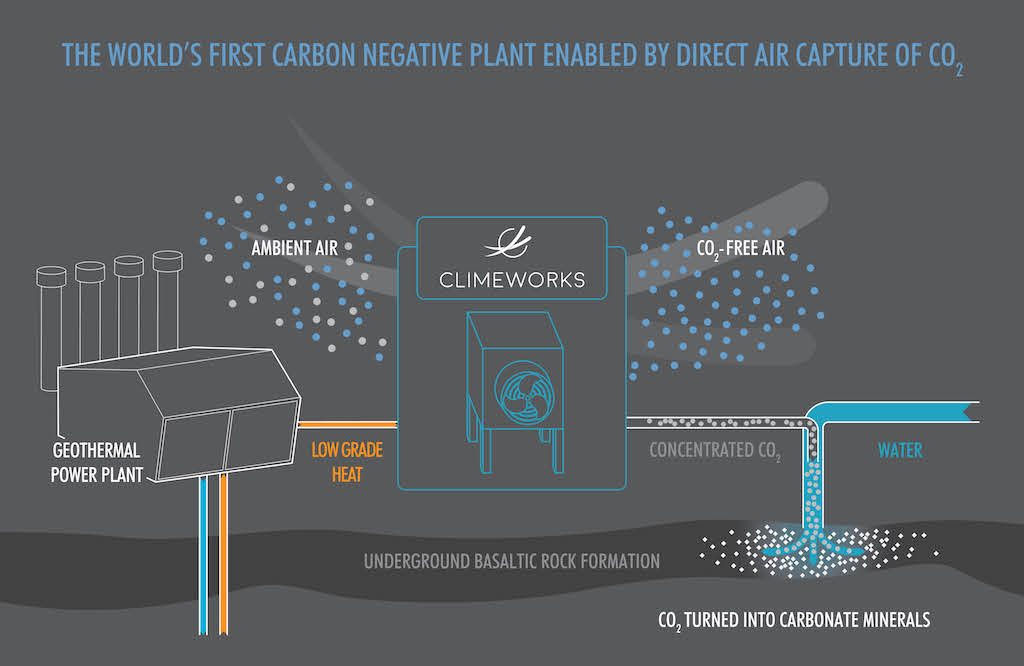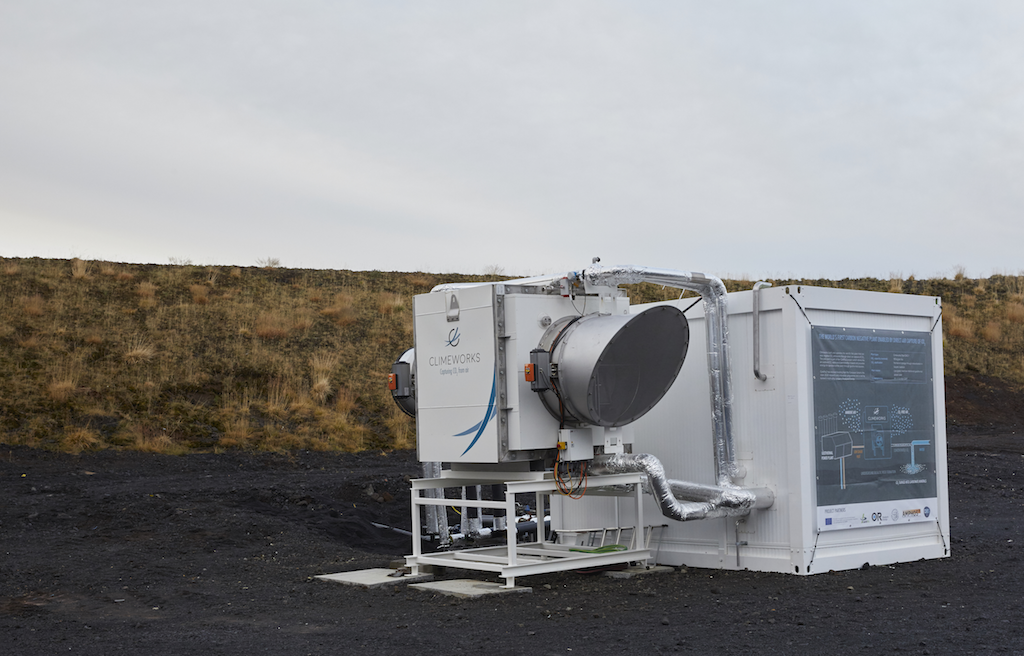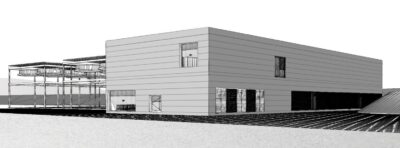Capturing and storing CO2 – a groundbreaking project at the Hellisheidi geothermal plant
A groundbreaking project was initiated at the Hellisheidi geothermal plant. In cooperation with Icelandic Reykajvik Energy, Swiss firm Climeworks has installed its direct air capture (DAC) technology at the plant for in a groundbreaking and first time to safely and permanently store CO2 geologically.
Announced this week, Swiss cleantech company Climeworks has partnered with Icelandic geothermal energy firm Reykjavik Energy to combine direct air capture (DAC) technology for the world’s first time with safe and permanent geological storage. As part of the CarbFix2 project Climeworks will demonstrate a safe, economically-viable and highly scalable carbon removal technology. This type of solution has been recognized as a crucial component in efforts to achieve global warming targets.
The EU-backed collaborative research project centers around one of the world’s largest geothermal power plants in Hellisheidi, Iceland, where CO2 is currently injected and mineralized at an industrial scale. A Climeworks DAC module has been installed on-site to capture CO2 from ambient air for permanent storage underground, thus creating a carbon removal solution. Scientific studies have warned that the two-degree climate target is not achievable without carbon removal solutions. Carbon negative solutions are also likely to be a key theme at the UN Climate Conference COP 23 starting in Bonn next month.
A testing phase has started during which the CO2 is captured from ambient air, bound to water, and sent to more than 700 meters underground. There the CO2 reacts with the basaltic bedrock and forms solid minerals, creating a permanent storage solution. Climeworks’ technology draws in ambient air and captures the CO2 with a patented filter. The filter is then heated with low-grade heat from the geothermal plant to release the pure CO2 which then can be stored underground.
During the trial Climeworks will test how its technology works with the specific weather conditions at the location in the South West of Iceland. The CarbFix2 project is a major step forward for DAC technology. Earlier this year the company made history with the world’s first commercially-viable DAC plant near Zurich which filters 900 tons of CO2 from the atmosphere and supplies it to a local greenhouse.
Christoph Gebald, Founder and CEO at Climeworks: “The potential of scaling-up our technology in combination with CO2 storage, is enormous. Not only here in Iceland but also in numerous other regions which have similar rock formations. Our plan is to offer carbon removal to individuals, corporates and organizations as a means to reverse their non-avoidable carbon emissions.” Edda Sif Aradóttir, CarbFix project leader at Reykjavik Energy: “We have developed CarbFix at a unique location here in Iceland and proved that we can permanently turn this greenhouse gas into rock. By imitating natural processes this happens in less than two years. By integrating the Climeworks and CarbFix technologies we create a solution that is deployable where we have basalt but independent of the location of emissions. This is important to scale up the CarbFix approach on a global level.”
The CarbFix2 project CarbFix2 has received funding from the European Union’s Horizon 2020 research and innovation programme and is led by Iceland’s multi-utility company Reykjavik Energy. It is based on the original CarbFix project, initiated in 2007. Further partners to CarbFix2 are The University of Iceland, CNRS (Toulouse, France) and Amphos 21 (Barcelona, Spain).

Here’s how the DAC module of Climeworks works:
- The Climeworks DAC module captures CO2 from ambient air
- The CO2 binds to our patented filter
- Once the filter is saturated with CO2, it is heated by low-grade waste heat from the geothermal plant
- The CO2 is released and bound to water
- The carbonated water is pumped more than 700 metres underground
- Here, it reacts with the basaltic bedrock, forming solid minerals
- A permanent, safe and irreversible storage solution is created
Source: Company release


















